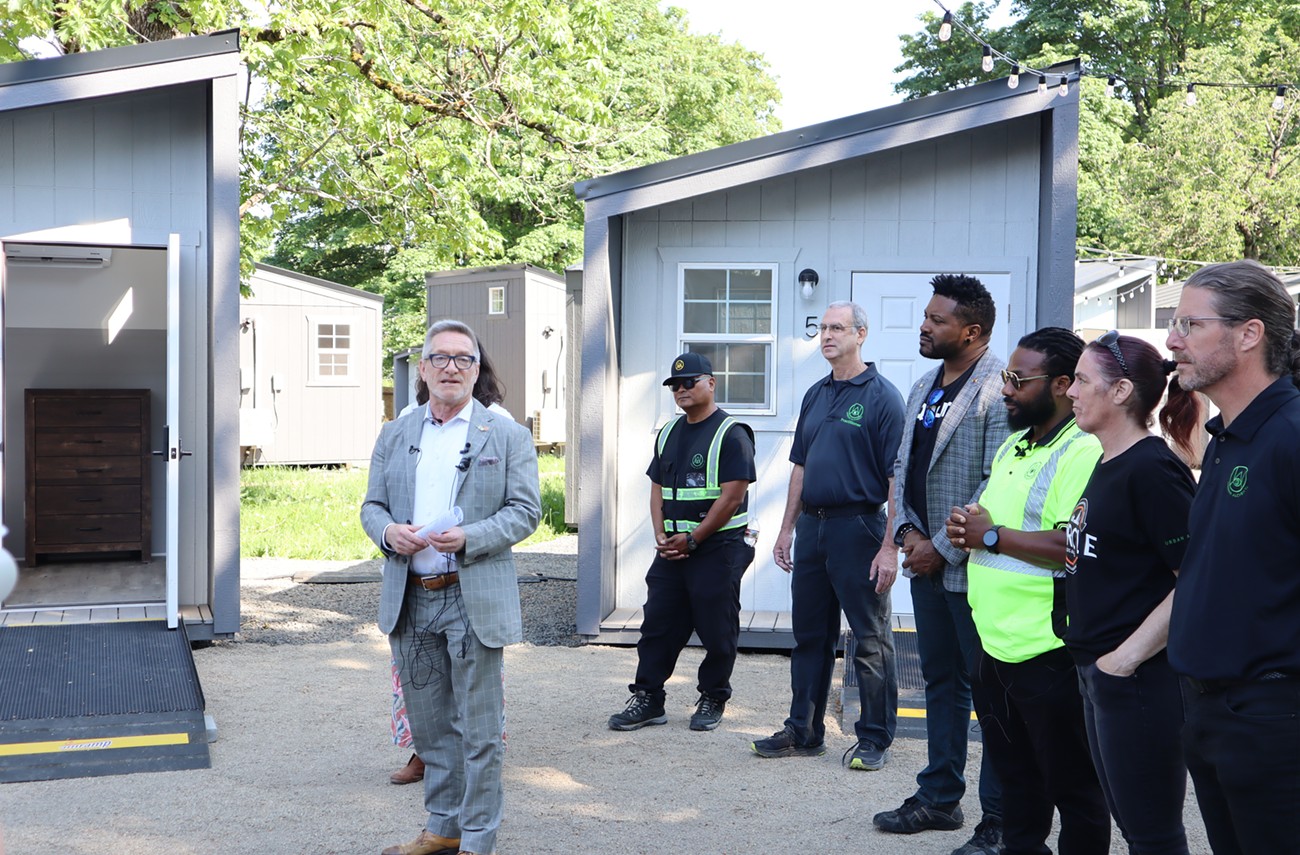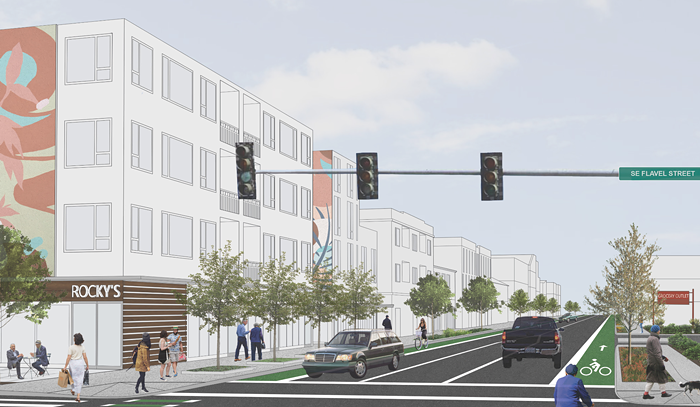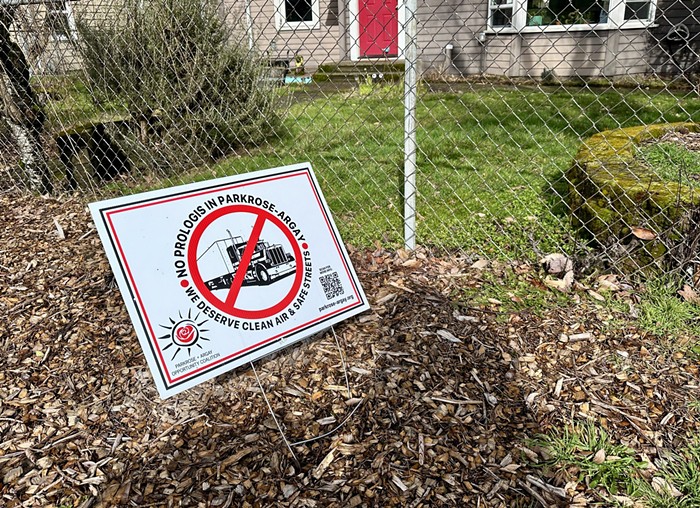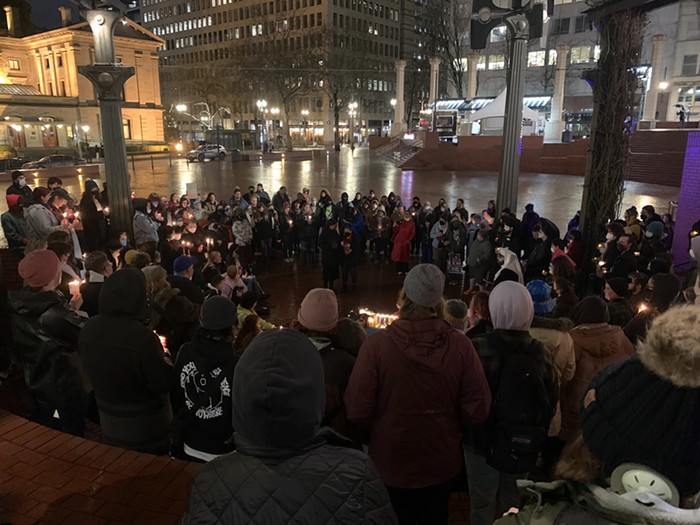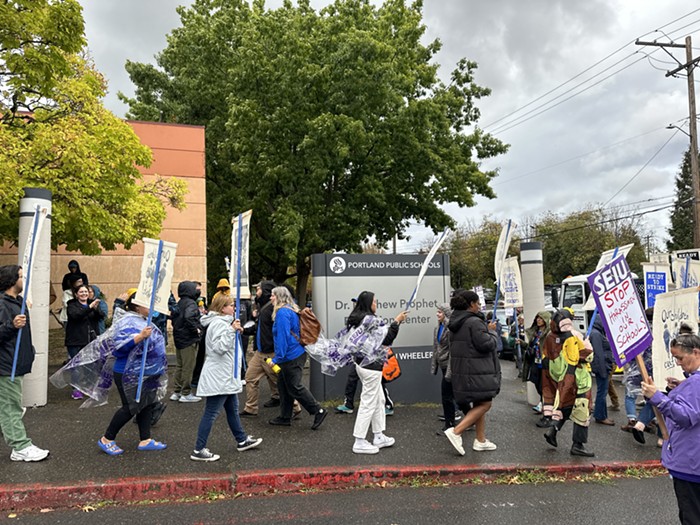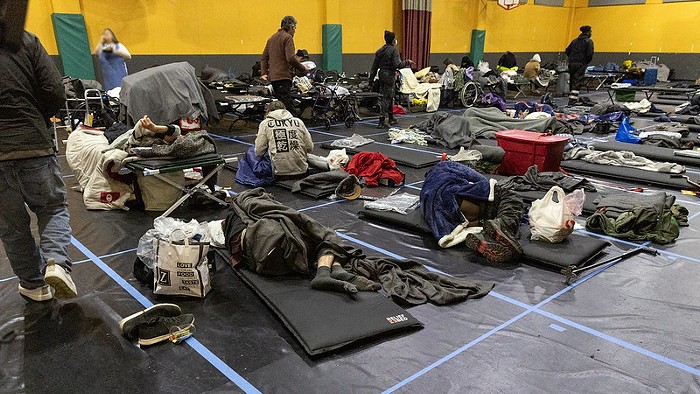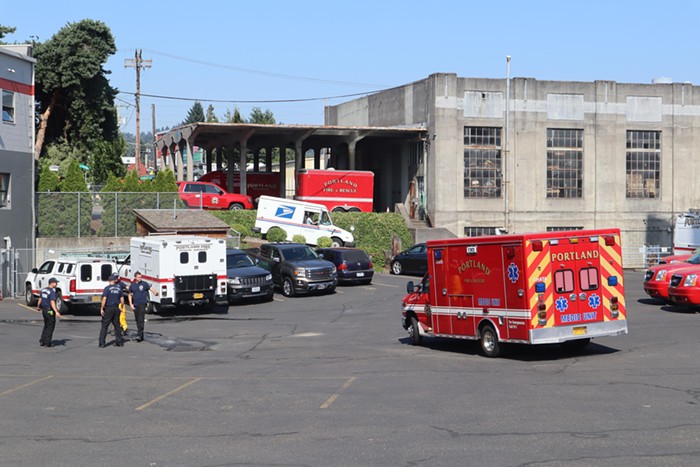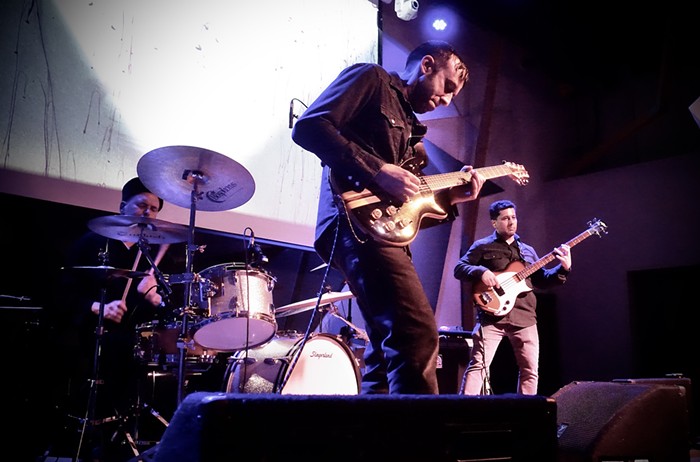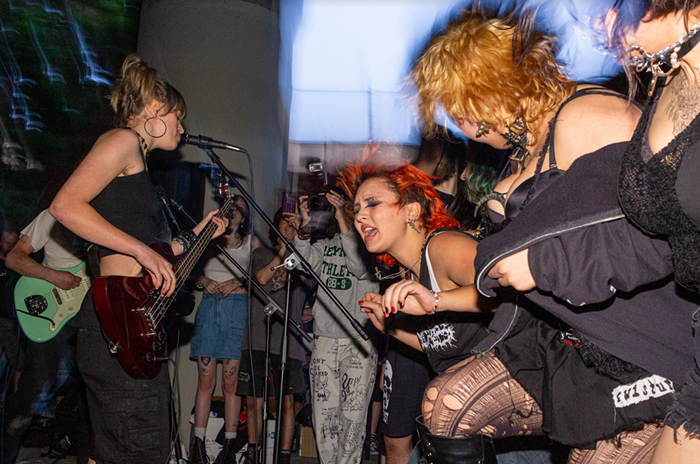UPDATE May 29: The city reports the Peninsula Crossing Safe Rest Village is now full, with 67 people living on site.
UPDATE 12:30 p.m. May 25: After the Mercury's initial reporting, city staff say the Safe Rest Village data dashboard will be updated with clear definitions, and eventually, more specifics about outcomes for occupants.
Portland’s third and largest Safe Rest Village has opened–the first to be managed by controversial California-based homeless services provider, Urban Alchemy.
City leaders have reported the site is now full, with 67 people living in the 60-unit village. The new alternative shelter site opened as the city of Portland continues to clamp down on camping in visible, public spaces, despite Multnomah County’s homeless population jumping 21% since 2022.
The 60-unit Peninsula Crossing Trail site in North Portland’s University Park neighborhood is one of six designated Safe Rest Villages planned by City Commissioner Dan Ryan’s office, in coordination with Multnomah County’s Joint Office of Homeless Services. The new village for unhoused residents was unveiled Thursday, May 18.
“This humanitarian crisis has been uncomfortable for a lot of people, and I think that today, there’s hope,” Ryan said during a tour with media and neighbors.
Much like the Multnomah site in Southwest Portland and Menlo Park village in East Portland, Peninsula Crossing features tiny, private pods with a bed and dresser. Each unit is climate controlled, and each Safe Rest site offers portable bathrooms and showers on the property, as well as a kitchen area. Each site also provides at least one meal a day.

dresser, and heating and cooling. Courtney Vaughn
An opening date has yet to be announced for the Peninsula Crossing Trail village, but Urban Alchemy staff have already been deployed to the site.
Urban Alchemy was recently given a $50 million five-year contract with the city of Portland to operate alternative homeless shelter sites. The California-based organization, which has faced a number of lawsuits, including a class action complaint in California alleging labor law violations, is also slated to manage the forthcoming mass alternative shelter site in inner Southeast Portland.
“Right now, our focus is making sure each room is prepared for its occupant,” said Kirkpatrick Tyler, chief of government and community affairs for Urban Alchemy. Tyler said his team is “continuing to build on this feeling of healing and hope, and that we’re prepared to welcome [residents].”
Transition to housing is difficult to pinpoint
Across the city, the Safe Rest Village model has been lauded as an alternative to street camping and congregate shelters, but the model’s success is still being evaluated.
Aside from the six Safe Rest sites planned by the city, two other culturally-specific sites–a BIPOC Village and Queer Affinity Village– are also funded under the same model. To date, four government-funded homeless villages are in operation, with the other Safe Rest sites scheduled to open on varying timelines.
From July 2022 through the end of March, 226 people were either living at one of the four villages, or did previously, according to city data. Of those 226 people, 89 left and 48 of those who left went on to temporary or permanent housing. But the data doesn’t currently differentiate between permanent and temporary housing. The Safe Rest program defines “temporary housing” broadly, but told the Mercury that the data dashboard will be updated in the coming months to better explain outcomes and definitions.
In an update Thursday afternoon, staff said 41 people went on to "permanent housing," while the other seven transitioned to some other temporary housing or shelter.
Bryan Aptekar, a liaison with the city’s Safe Rest Village team, told the Mercury the federal definition of "temporary housing" is broad and often confusing. The data dashboard also included an error in the language that suggested people who wound up back on the streets were counted as finding temporary housing.
The city suppresses some site-specific data to protect residents' privacy, Aptekar noted, but said future data updates will include more specificity about how many people successfully transitioned to permanent housing.
Despite the current lack of specificity, Safe Rest team staff say the numbers reflect the program’s initial success. Staff note more than half of the 89 people who left were documented as finding some form of housing or shelter elsewhere.
“We are happy with the data we have, but we also want to do some more comparisons,” Aptekar said. “It isn’t a large number, 226, when we have thousands of people out there who need help. We acknowledge that, but [Safe Rest Villages] are one of many options.”
Aptekar also noted the need for a diverse range of shelter options across the Portland metro region.
Measuring the program’s success is also difficult because many of the residents at the villages are likely still there. Most of the sites were designed to allow people to stay anywhere from six months to two years. The Queer Affinity and BIPOC Villages both operate on a 24-month timeframe. The other sites expect residents to stay for six to nine months.
Even if the Safe Rest Village model proves successful in transitioning more people into housing, its longevity isn’t guaranteed. The program is funded through American Rescue Plan Act dollars, with a projected three-year timeframe, ending in December 2024. After that, it’s up to the city or another agency to step in and find continued funding.
City-sponsored villages aren’t for everyone
Nearly 75 percent of the residents who’ve stayed at a Safe Rest Village report some form of impairment or disability, according to the city’s data dashboard. But as the Mercury reported earlier this month, many regional homeless shelters have had trouble serving people with physical disabilities, due to staffing constraints. Even if a shelter has ramps for wheelchairs and mobility devices, most sites don’t have staff to assist residents in getting in and out of bed or in and out of a bathroom.
Urban Alchemy says its staffing ratios are higher than other providers, allowing the organization to offer more hands-on assistance, when needed.
“These sites aren’t fit for someone who’s not ambulatory, who can’t move on their own,” Tyler said. “But … can we help people move and go? Yeah, we’re always going to do that. We also don’t have a very sedentary operation model, so you won’t come in and see folks sitting everywhere…our teams are always moving and engaged and available, which is how we’re able to keep the community safe.”
Tyler said if someone has higher physical or behavioral health needs than what his team can provide, they’ll recommend an alternative location with more services.
Despite neighbor complaints, some say conditions are already improving
Nearly every alternative shelter site announced by the city has been met with pushback and fear from neighboring residents. The Safe Rest Villages have been no exception. As the city tried to open the Multnomah location in the parking lot of the Sears Armory in Southwest Portland, at least one resident tried to sue the city, unsuccessfully.
The complaint claimed the city wasn’t following its own codes or land use laws, but a judge eventually dismissed the case. Emergency homeless shelters don’t have to comply with the same zoning and land use review rules as traditional developments.
At Peninsula Crossing, neighbors say they were left in the dark about site plans and at least one adjacent property owner complained to city leaders that the portable restrooms sit right next to his kitchen window. Another neighbor said the city “has failed at every opportunity to do bridge building” in regard to citing new villages in residential neighborhoods.
Still, others say there's a silver lining.
Tom Karwaki serves on the University Park Neighborhood Association’s board of directors. He said the neighborhood group asked the city for an organized village for unhoused Portlanders a decade ago.
“We’ve been supportive of this,” Karwaki said, noting camping in the area has diminished since the Peninsula Crossing village was established, and it’s “gotten quieter.”
“A managed village is always a better solution than an unmanaged village,” Karwaki said. “We had as many as 200 people living in the area.”
The Sunderland RV Park, which would allow up to 55 RVs to park and stay at a five-acre site in North Portland near the airport, is the next Safe Rest site expected to open. The city is waiting for the county to finalize a contract with the Salvation Army to manage the village.
